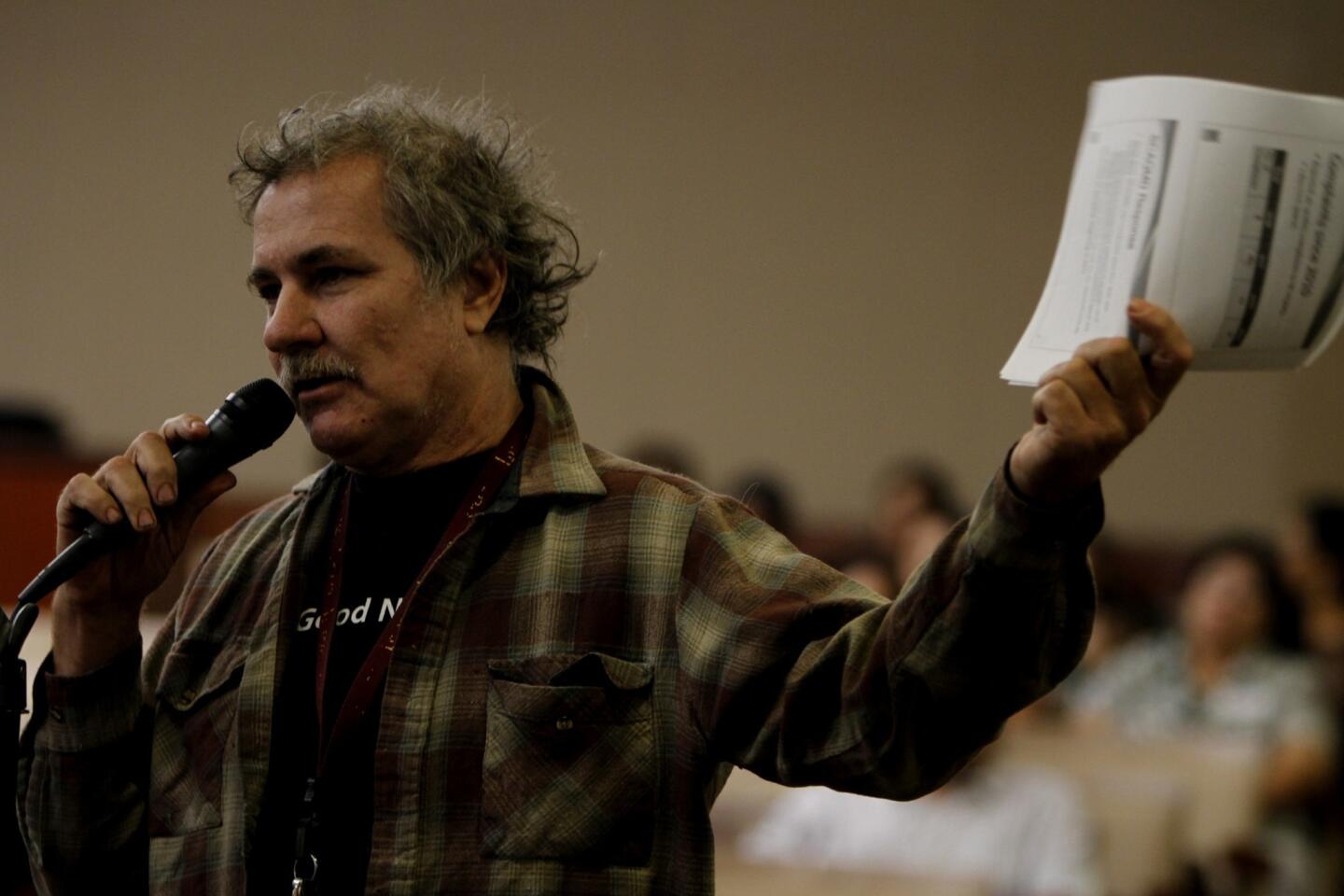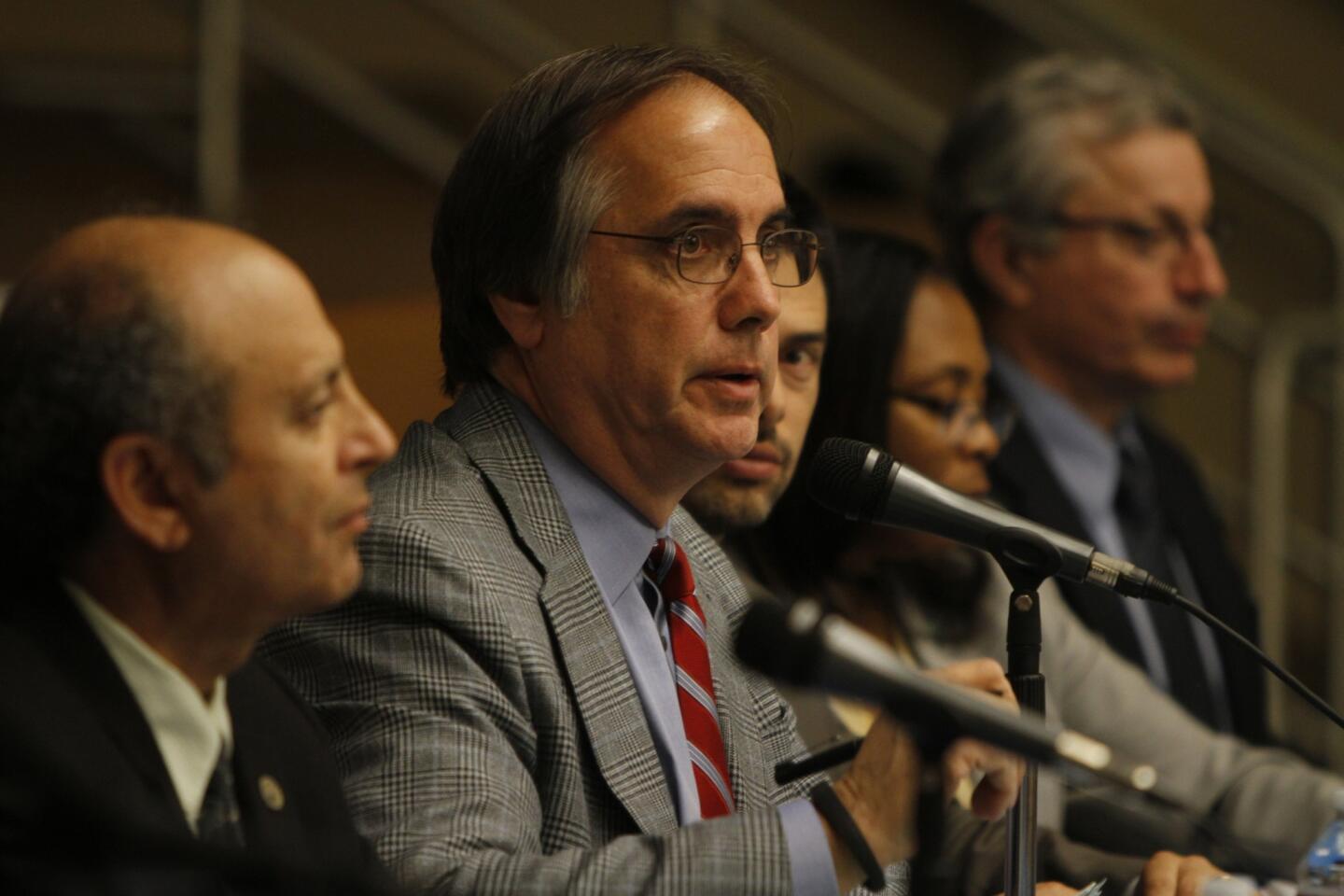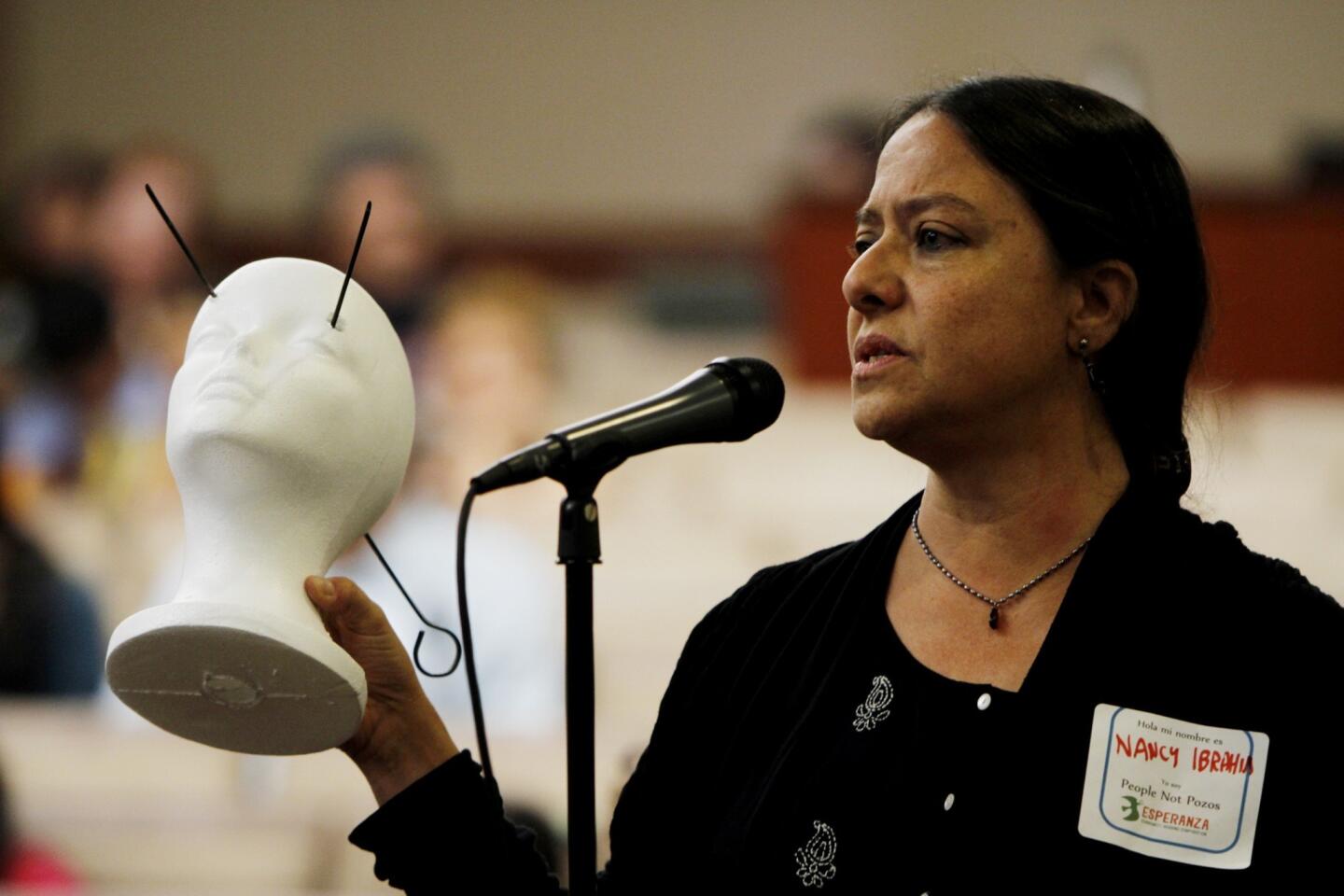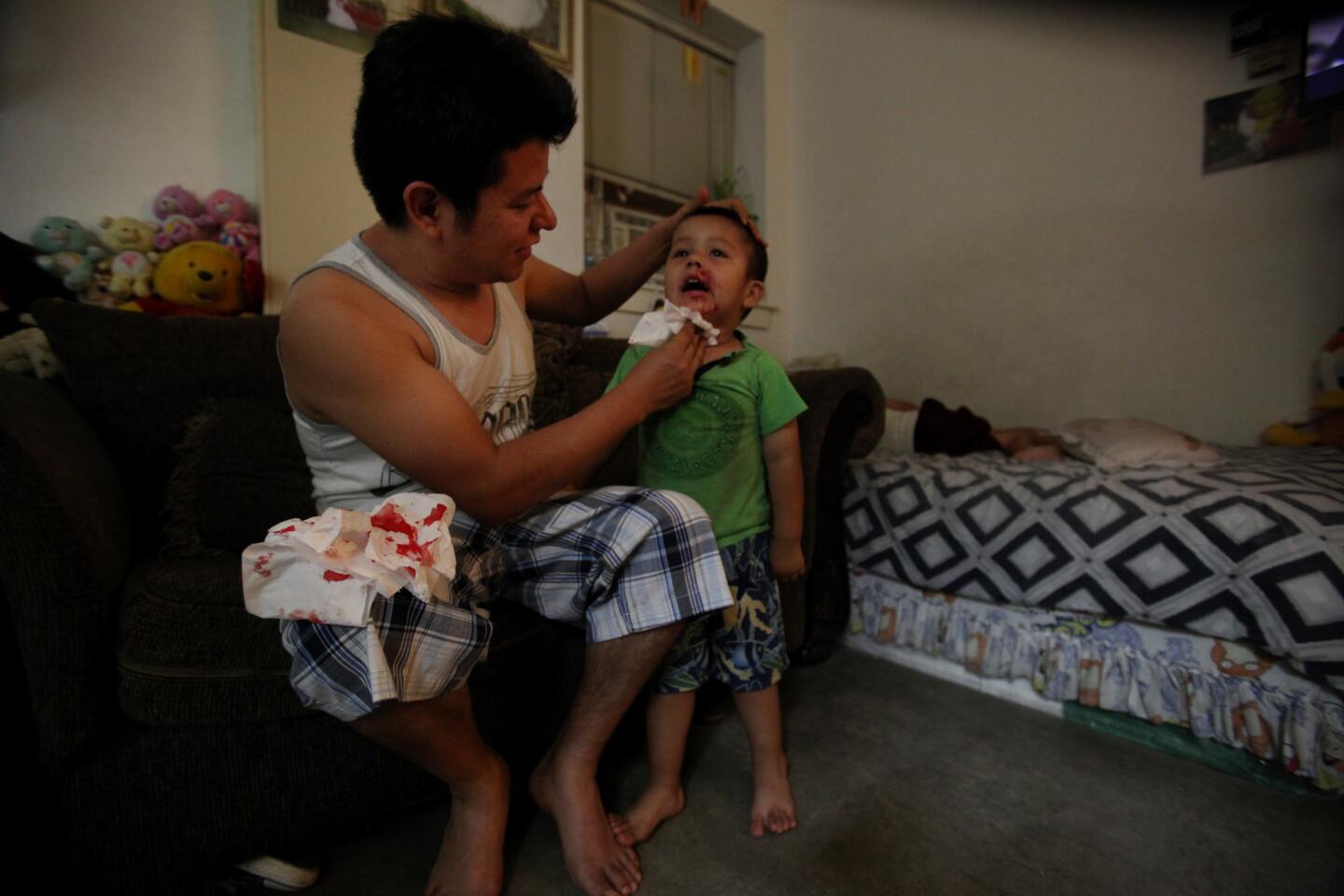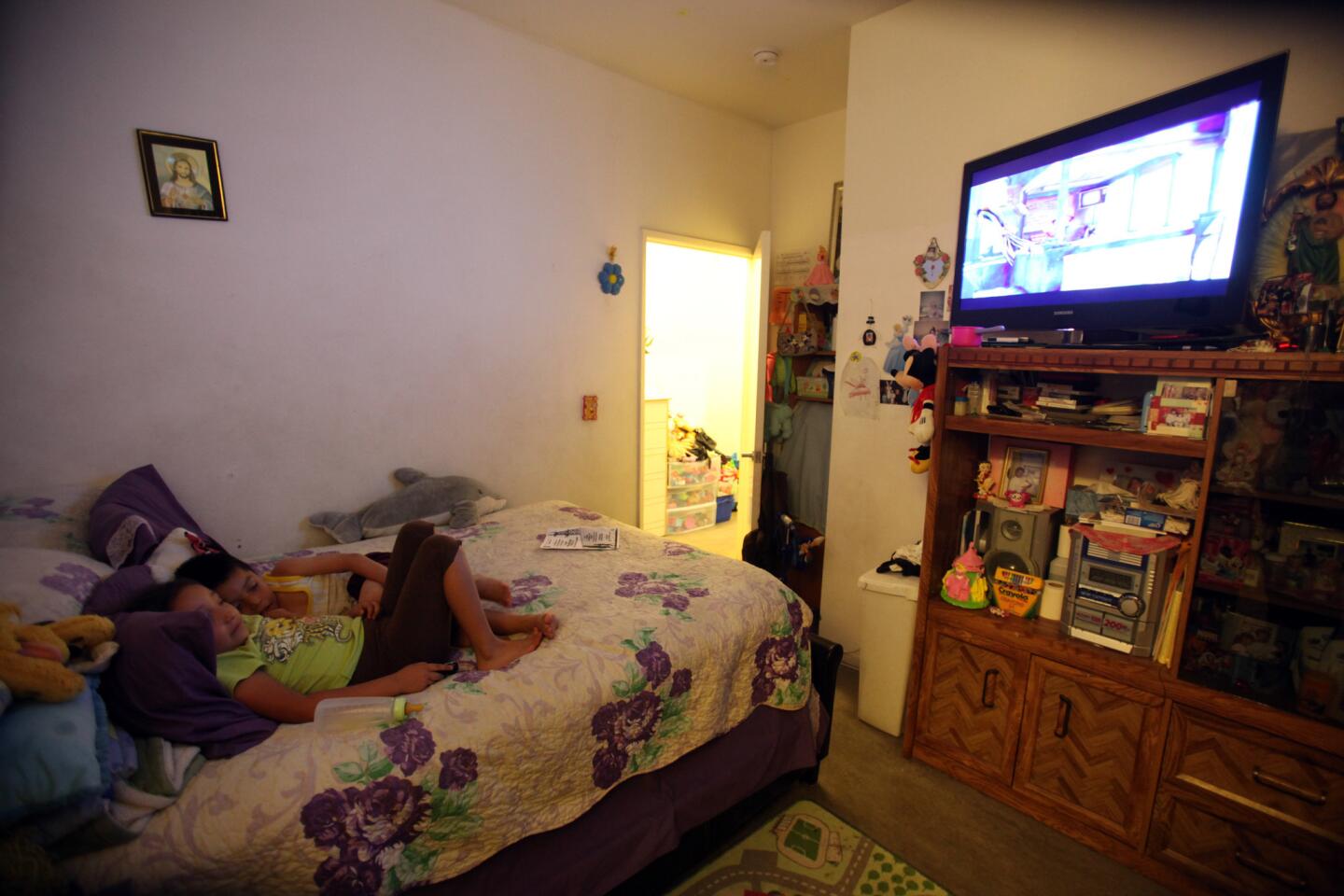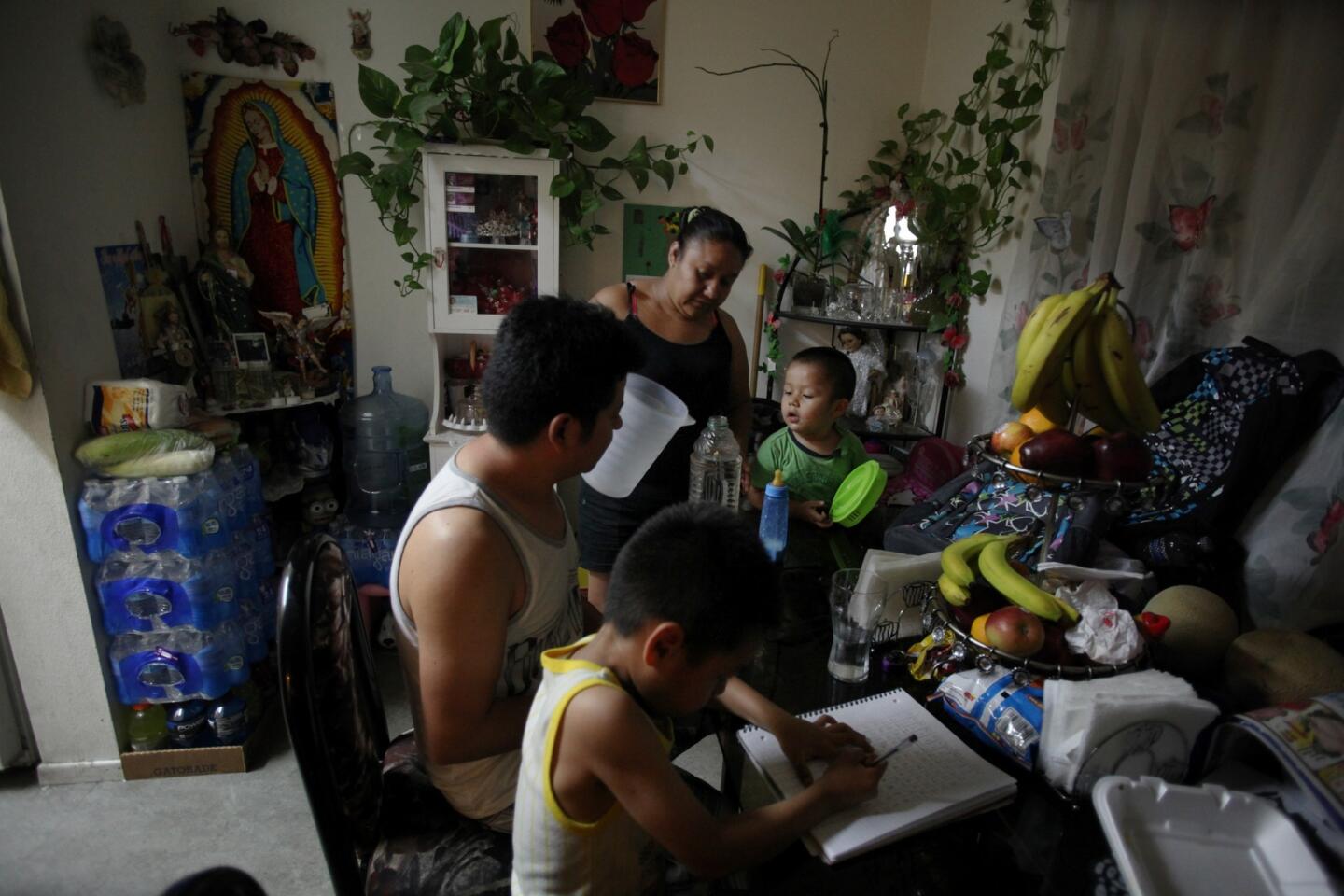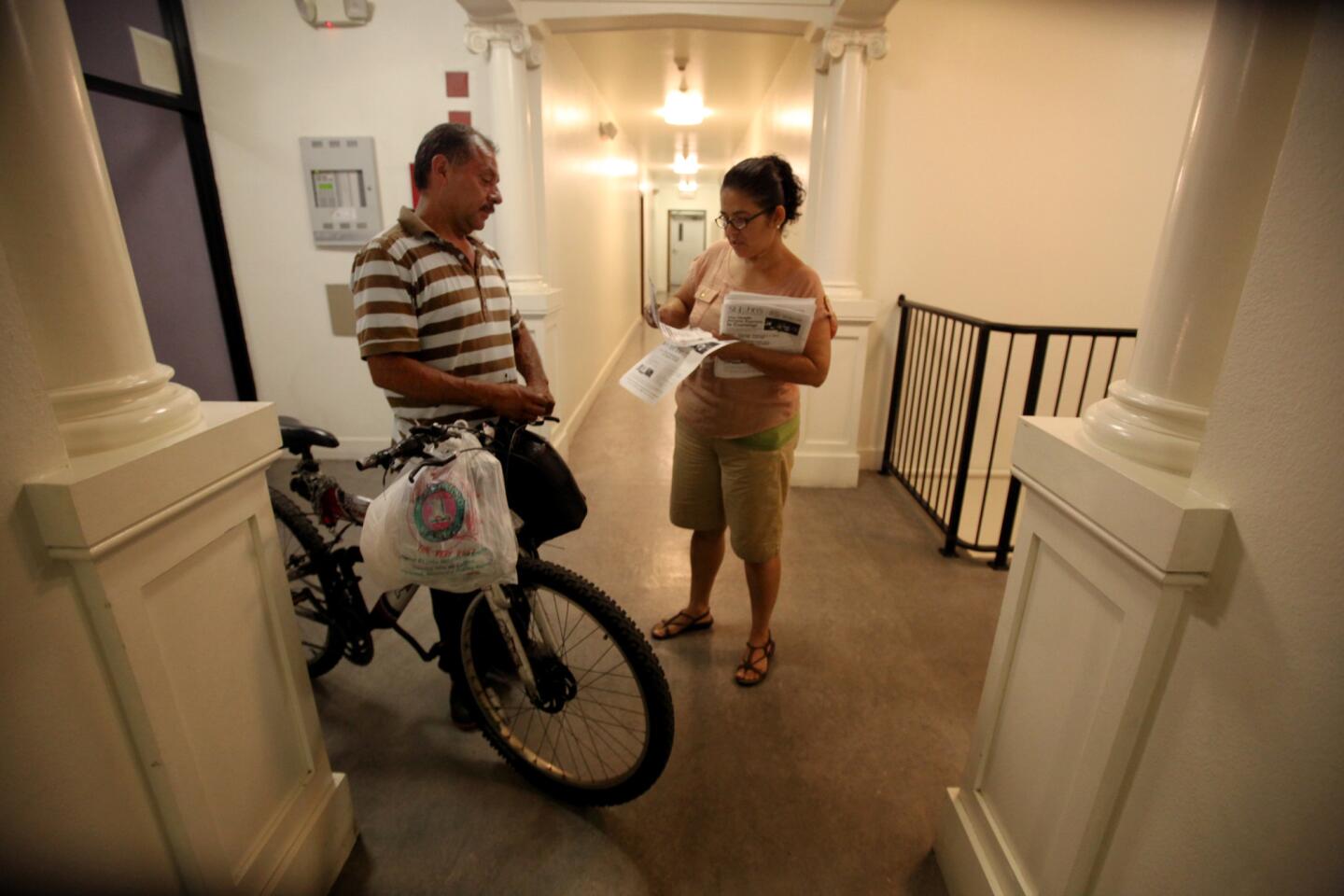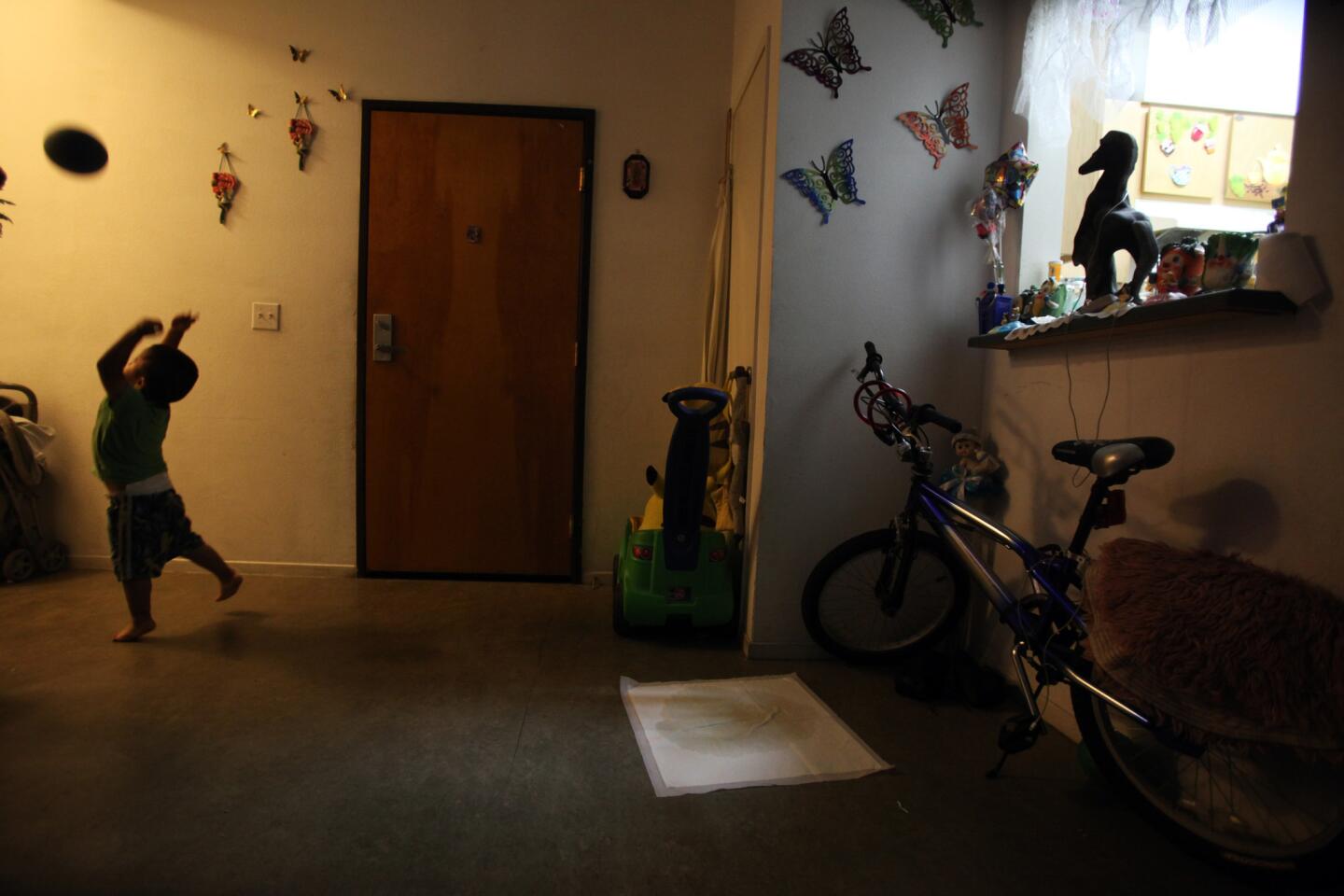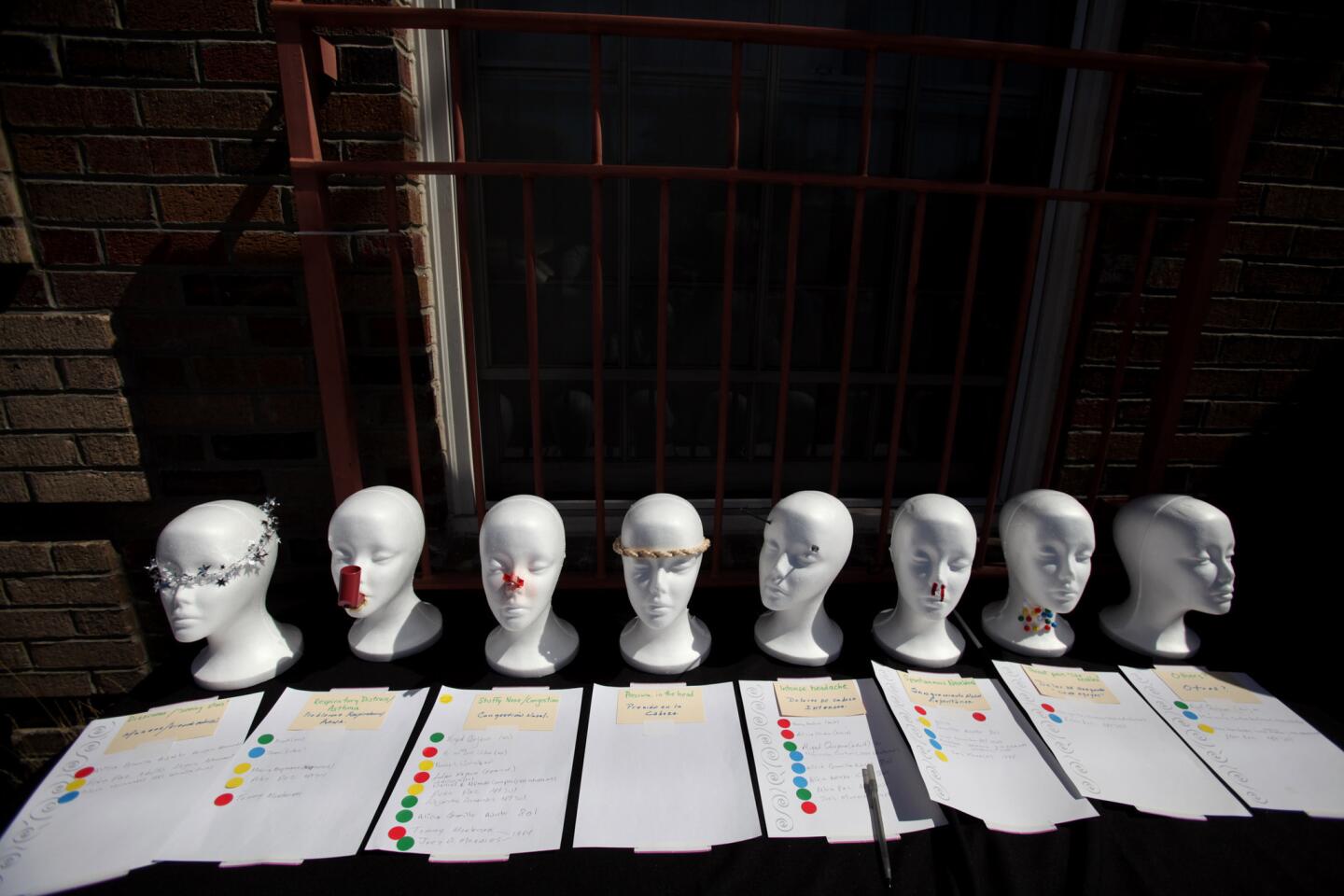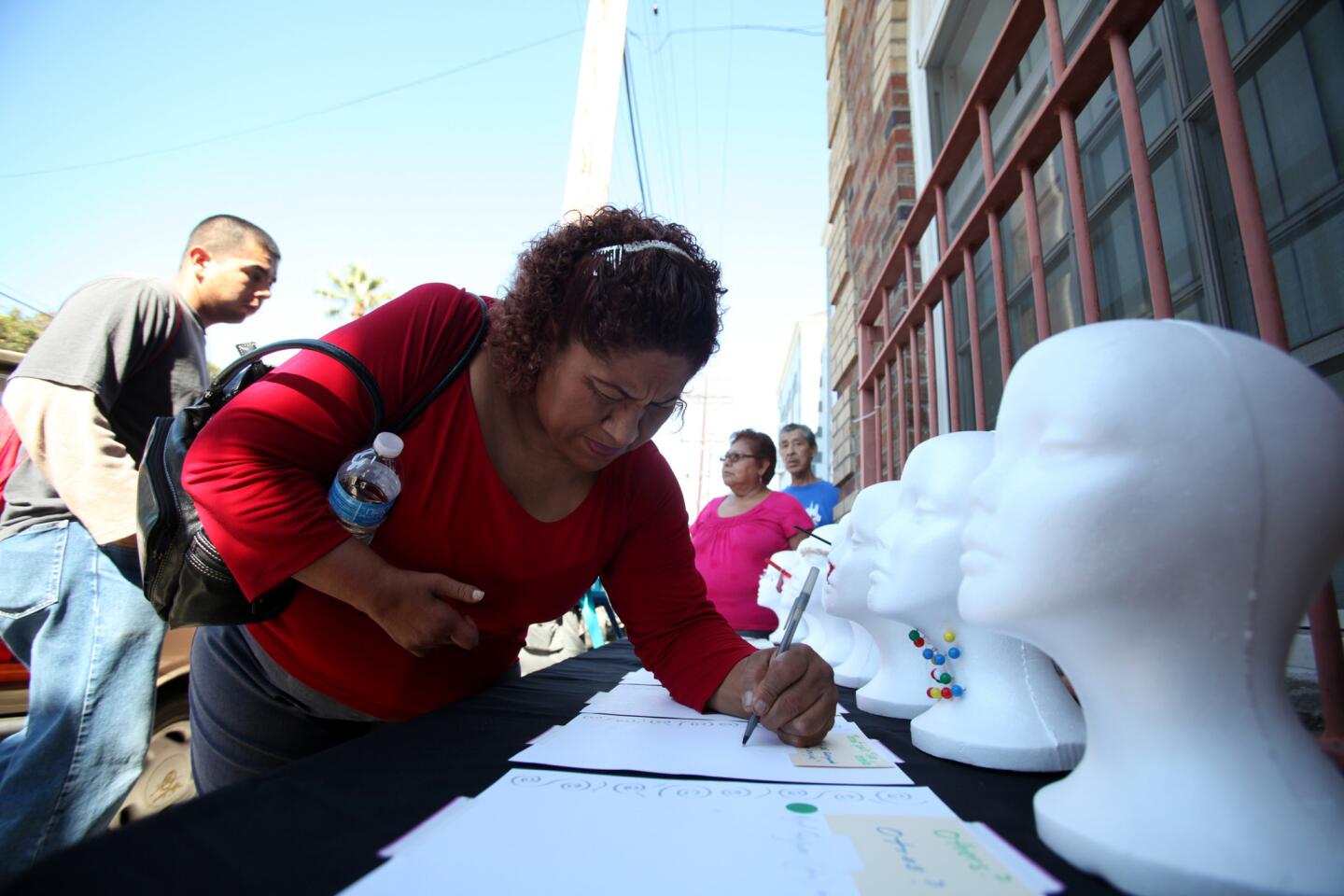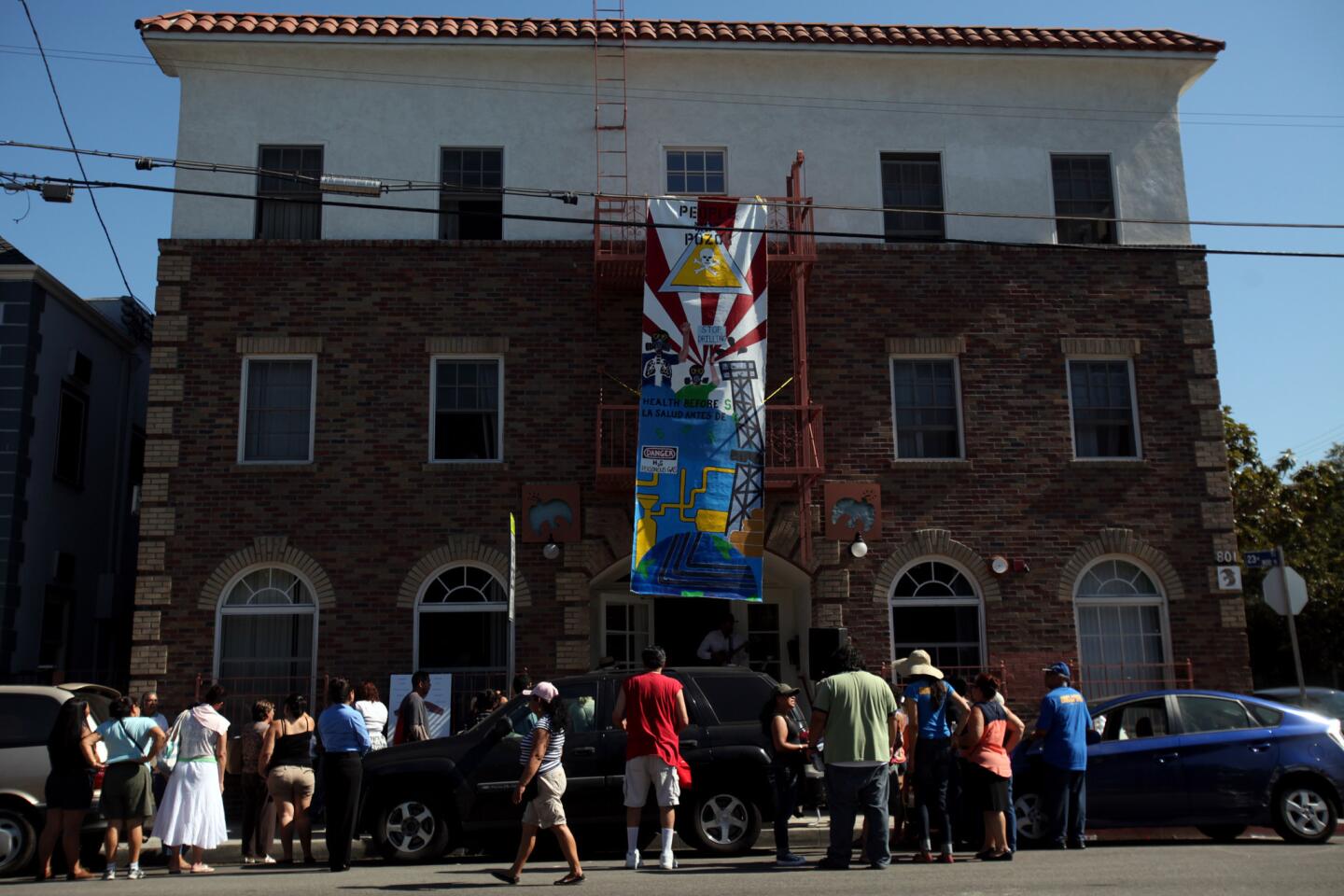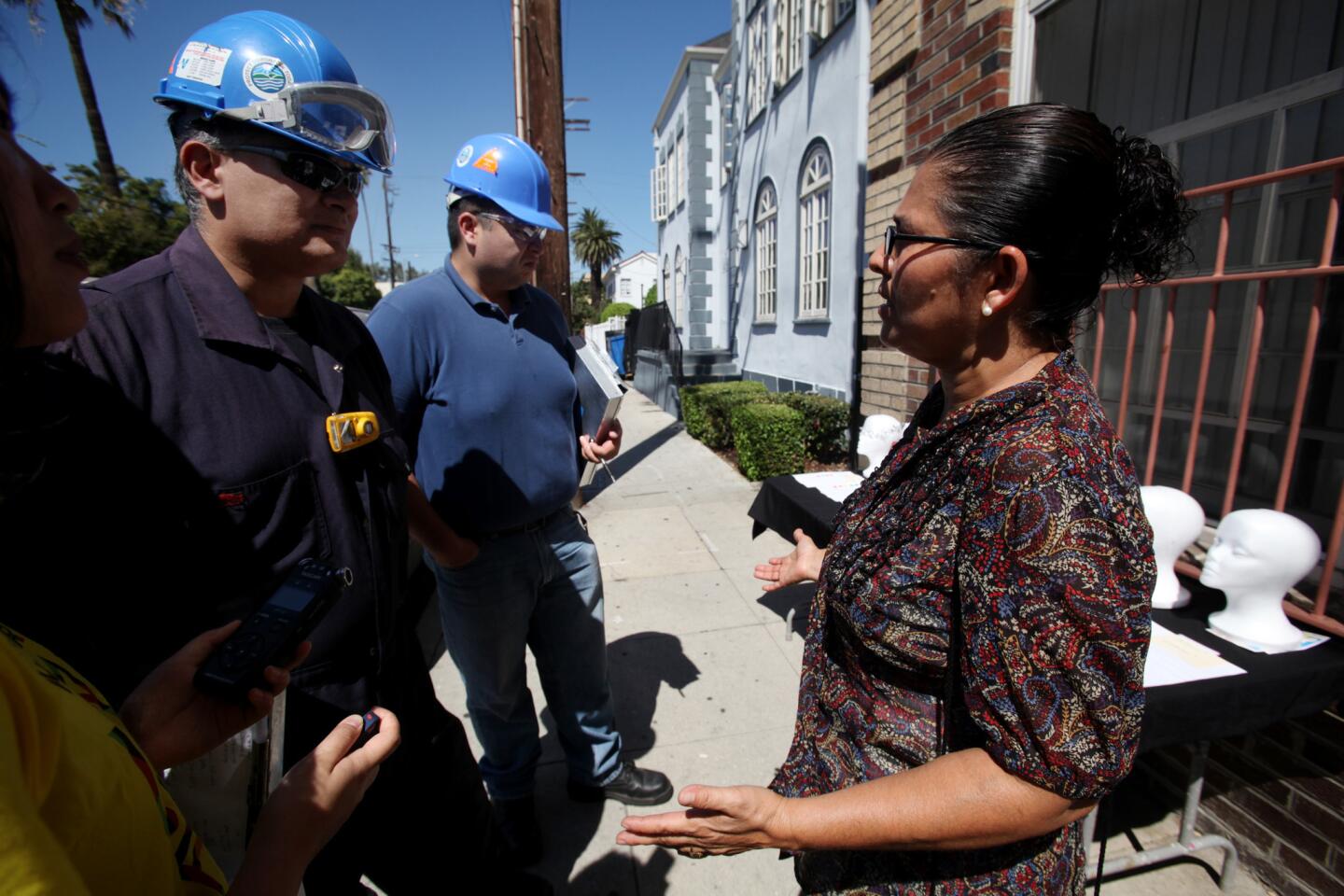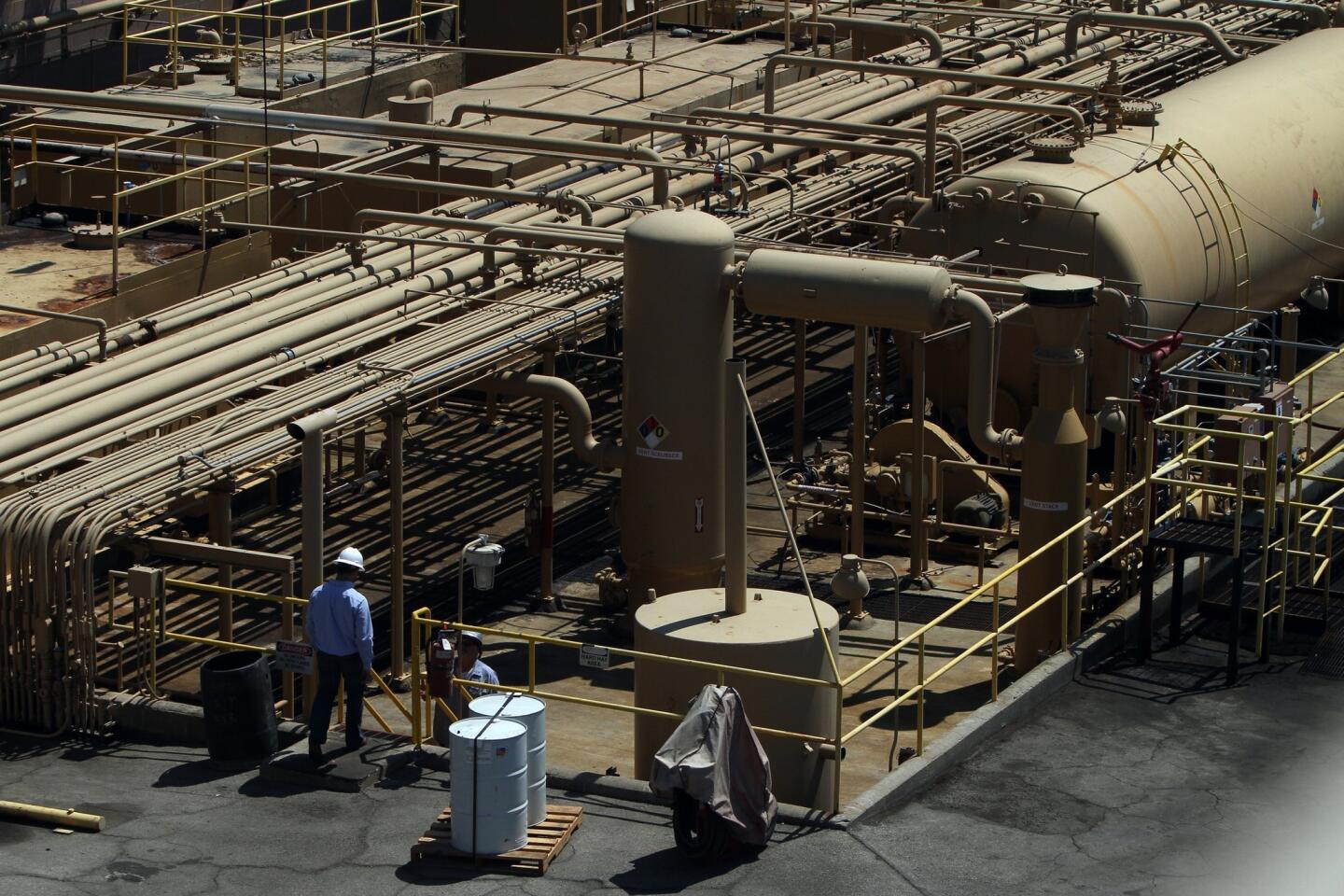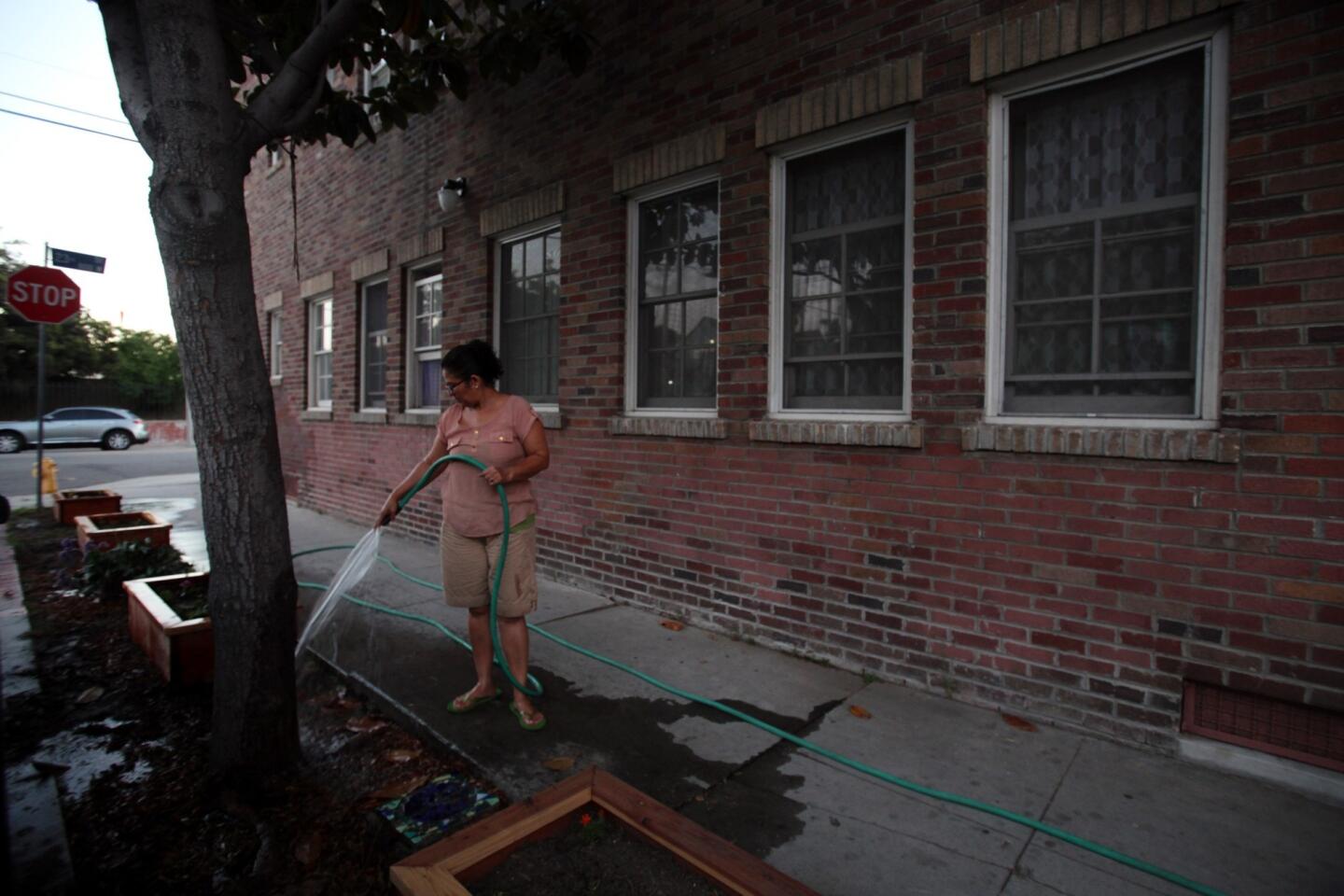Chemical odor, kidsâ nosebleeds, few answers in South L.A. neighborhood
Monic Uriarte says she began having headaches and bouts of dizziness three years ago, about the time she and her neighbors began smelling a chemical odor on the streets and in their homes.
Then Uriarteâs 9-year-old daughter and other children in the University Park neighborhood of South Los Angeles began suffering from recurring nosebleeds and respiratory ailments.
After a little sleuthing, Uriarte and others traced the smell to property shielded from the neighborhood by a 12-foot-high, ivy-covered wall. Behind it, on land leased from the Catholic Archdiocese of Los Angeles, Allenco Energy Inc. had ramped up production from an oil field by more than 400% â from 4,178 barrels in 2009 to 21,239 in 2010, according to the state Division of Oil, Gas & Geothermal Resources.
Residents of the low-income community complained to state air quality officials 251 times over the next three years â up from just eight complaints from University Park in 2008-09. The South Coast Air Quality Management District responded by issuing 15 citations against Allenco for foul odors.
The district insists that based on its air sampling, the odors are harmless and pose no health risk. Instead, the issue âboils down to incompatible zoning decisions,â said Mohsen Nazemi, the districtâs deputy field officer for engineering and compliance.
James Dahlgren, a toxicology expert and former assistant professor of clinical medicine at UCLA, does not agree. Dahlgren is investigating the complaints of illness on behalf of the Esperanza Community Housing Corp., which uses public and private funds to build affordable housing projects in the University Park area.
Dahlgren said the odors cannot be dismissed as harmless. âIf you can smell it, itâs not safe,â he said. âThese people are experiencing symptoms.â
Allenco refused to comment about its operation.
University Park is not alone in its concerns about living near newly invigorated wells. High prices for crude oil and new extraction technologies are driving a revival of urban oil fields across Southern California. Some neighborhoods are pushing back.
In Baldwin Hills, residents near the Inglewood Oil Field want to know if structural damage to their homes was caused by drilling. In Culver City, a venting of fumes over homes triggered a class-action lawsuit. In Whittier, residents are fighting plans to resume oil production on land set aside as a nature sanctuary.
âWeâre seeing people beginning to demand more action from regulatory agencies and industry when it comes to their health and safety,â said Angela Johnson Meszaros, general counsel with the Los Angeles chapter of Physicians for Social Responsibility. âTheyâre tired of being told that everything is fine.â
The Allenco site is about half a mile north of the USC campus, surrounded by affordable housing projects and schools, including the Doheny Campus of Mount St. Maryâs College. The site was given to the archdiocese in the 1950s by descendants of Edward L. Doheny, one of Los Angelesâ early oil barons.
Today, Allencoâs operations are kept behind brick walls, shaded by oak trees and fringed with manicured lawns.
U.S. Energy Department records show that all 21 wells at the site had been idled in the 1990s because of low oil prices and calcification. As part of a project cosponsored by the Energy Department, hydrochloric and phosphoric acid was used to unplug five of the wells in 2005. California records show that seven to 10 wells are now active.
Signs on gates at the site provide emergency telephone numbers but no information about the nature of the facility. Behind the walls, the roughly two-acre site bristles with pipes, tanks and gauges. The pumps are beneath the surface.
A sign inside the walls warns: âDanger: H2S. Poisonous Gas.â No such signs are posted outside the site, which is a few yards from schools and homes.
H2S is hydrogen sulfide, a colorless, flammable gas that occurs naturally in petroleum and natural gas. Exposure to it triggers symptoms consistent with some of the complaints from the neighborhood. Repeated exposure can cause severe eye and respiratory irritation, headache, dizziness and vomiting, according to the federal Occupational Safety and Health Administration.
Sam Atwood, a spokesman for the air quality management district, said the agency has taken three air samples at the Allenco site and in the surrounding neighborhood. The samples, all from 2011, showed extremely low levels of H2S, and low levels of other noxious gases such as carbonyl sulfide.
However, a sample taken from a wastewater tank discharge line on Aug. 29, 2011, detected levels of hydrocarbons from volatile petroleum products that were 10,000 times higher than ambient levels, according to air quality district lab reports. Although some hydrocarbons are toxic, the analyses did not identify the hydrocarbons in the sample or determine how long they had been leaking into the air.
Separately in 2011, the air district ordered Allenco to pay to move Mount St. Maryâs College air-conditioning intake vents that were near the oil site. Students and faculty had complained that foul odors from the vents lingered for hours in classrooms.
The air district did not notify the neighborhood about the change because the odors âwere never considered a health threat (i.e. one that could cause permanent harm),â Atwood said in a written statement.
âFoul odors can be extremely objectionable, cause symptoms such as headaches and nausea and significantly impact residentsâ quality of life, especially if they are present on an ongoing basis,â Atwood wrote. âThatâs why SCAQMD takes complaints of foul odors seriously.â
The executive director of the air quality management district, Barry Wallerstein, ventured to the Allenco site last week for a brief visit and a personal sniff test.
âI was there for about 20 minutes and I had a hard time detecting anything in the air,â Wallerstein said. Nonetheless, he added, âIâm going to ask our staff to take more air samples. I am also going to set up and attend a community meeting.â
As concerns mount, some residents have decided to move away. Sabino Valencia, a 37-year-old machinist, has lived in the neighborhood for 22 years but doesnât think itâs safe anymore for his five children. Two of them have nosebleeds nearly every day, he said.
âMy doctor says my sonsâ nosebleeds may be happening because we live across the street from that oil field,â Valencia said. âWe have friends around here whose children also suffer from nosebleeds.â
On a recent Wednesday night as the family was preparing for bed, Sabinoâs 21/2âyear-old son Jonathan had a nosebleed that dripped on the living room floor.
Uriarteâs daughter, now 12, also still suffers from nosebleeds.
âSomething is wrong in our neighborhood,â Uriarte said. âWe want answers.â
More to Read
Sign up for Essential California
The most important California stories and recommendations in your inbox every morning.
You may occasionally receive promotional content from the Los Angeles Times.
